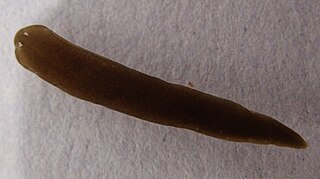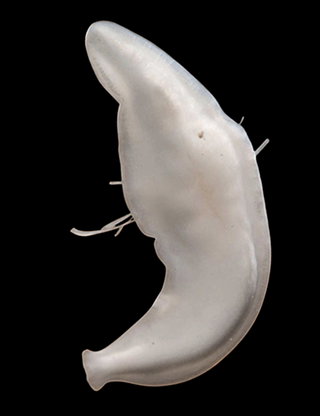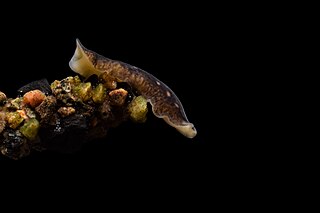
Planarians (triclads) are free-living flatworms of the class Turbellaria, order Tricladida, which includes hundreds of species, found in freshwater, marine, and terrestrial habitats. Planarians are characterized by a three-branched intestine, including a single anterior and two posterior branches. Their body is populated by adult stem cells called neoblasts, which planarians use for regenerating missing body parts. Many species are able to regenerate any missing organ, which has made planarians a popular model in research of regeneration and stem cell biology. The genome sequences of several species are available, as are tools for molecular biology analysis.

Planaria is a genus of planarians in the family Planariidae. Due to its excellent ability to regenerate, species of Planaria has also been used as model organisms in regeneration studies. When an individual is cut into pieces, each piece has the ability to regenerate into a fully formed individual. When decapitated, they retain their memories.

Dugesia is a genus of dugesiid triclads that contains some common representatives of the class Turbellaria. These common flatworms are found in freshwater habitats of Africa, Eurasia, and Australia. Dugesia is best known to non-specialists because of its regeneration capacities.

Dendrocoelidae is a family of freshwater tricladida flatworms that has a holarctic distribution.
Girardia tigrina, known as the brown planarian or the immigrant triclad flatworm, is a species of dugesiid native to the Americas. It has been accidentally introduced into Europe and Japan.

Schmidtea polychroa is a species of freshwater flatworm, a dugesiid triclad that inhabits the shallow mesotrophic or eutrophic waters of rivers and lakes of Europe. It is also present in North America, where it has been introduced at least in the Saint Lawrence river system. It is an animal with a limited dispersion capability.
Schmidtea lugubris is a species of freshwater flatworm, a dugesiid triclad found in Europe.

Dendrocoelum is a genus of freshwater triclad. Over one hundred species have been described.
Phagocata is a genus of planariid triclad.

Sphalloplana is a genus of triclads belonging to the family Kenkiidae.

Baikalobia is a genus of freshwater triclad in the family Dendrocoelidae. Species have been documented in Russia.

Papilloplana is a genus of triclads belonging to the family Dendrocoelidae.
Dendrocoelopsis alaskensis is a species of freshwater triclad in the family Dendrocoelidae. It is found in the White Mountains in Alaska.
Dendrocoelopsis americana is a species of triclad belonging to the family Dendrocoelidae. It has been found in the South Central United States.
Dendrocoelopsis piriformis is a species of freshwater triclad in the family Dendrocoelidae. It is found in Alaska.
Cura foremanii is a species of freshwater planarian belonging to the family Dugesiidae. It is found in freshwater habitats within North America.
Oregoniplana opisthopora is a species of planarian in the family Cercyridae. Its type-locality is Oregon.
Procerodes lobatus is a species of triclad in the family Procerodidae.
Hymanella is a genus of triclad belonging to the family Planariidae. Species have been found in North America.

Paraplanaria is a genus of triclad belonging to the family Planariidae.








